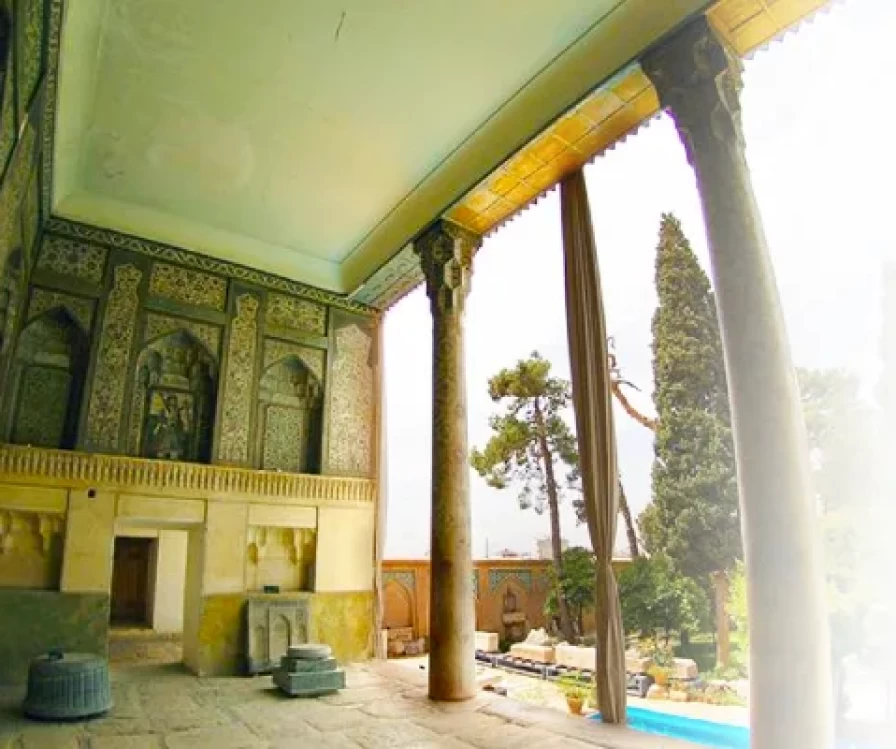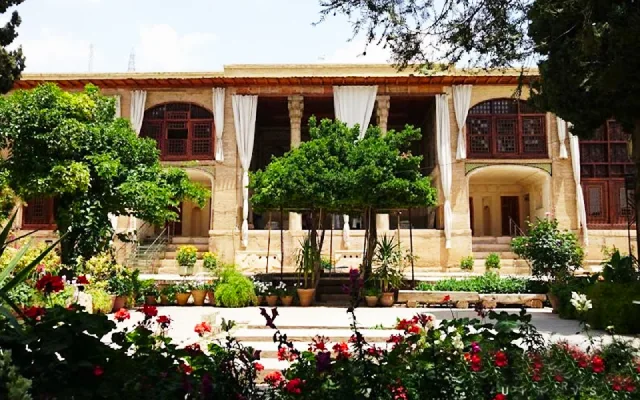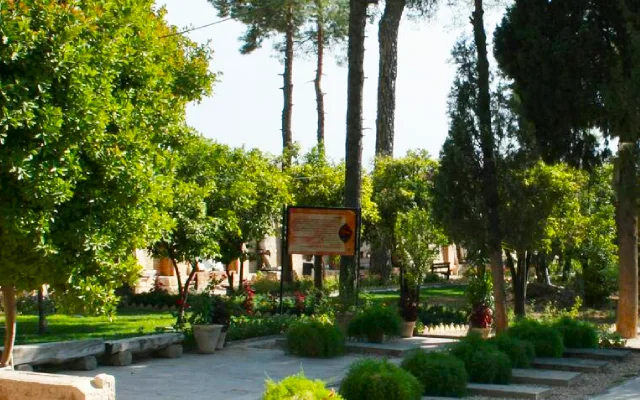
Haft-Tanan garden of Shiraz : walk through history and a love story





Haft Tanan garden
There are many gardens in Iran which their structure is the same but the form and ornaments are different from each other. Some of them are huge in size and delicate in form and structure and some of them are small but cozy and tranquil. Depending on the money they spent the forms are changing but all of them have something to say. Imagine you are visiting and old city which its history return back to 400 years ago. It brings you to the pages of history books and give you an impression which you cannot find it anywhere and anytime in the whole world. These houses are like time machines, just by knocking the door it is like clicking a computerized software which ordered to bring you thousands of years ago. It is like the story of one thousand and one night in your life. Most of the old traditional houses in Iran have the age of 400 hundreds more or less from safavid era to Qajars dynasty. Actually many of them destroyed because of natural disasters and some of them because of enemy invasions and other problems during their life. But fortunately many of them are in good condition and refurbished by private section or cultural heritage ministry from government. Visiting of old traditional gardens are good experience you never forget. Unfortunately because most of Iran is covered by deserts and the rain and precipitation is too low in most parts of the country even in Persian gulf and the only exception is around Caspian sea, the prominent percentage of Iranian lands are covered by sand and silt and because of this the only source for making buildings are made from mudbricks against stone and baked bricks. This lack made all the house, buildings, citadels and castles are susceptible to ruining and most of the old buildings which are made before 500 years ago ruined because of rains, storms and other natural forces and today you can find just a dune of sand or silt and cobles which are used to made the main structure but today most of them are changed to a mass of ingredients used many years ago. Even all the stone structures during Achaemenes era were covered by sand until the day the archaeologists in earl 20th century started to recover the remaining of those stone structures and today you can find them in form of huge stone structures like Persepolis and Pasargadae in south of Iran . So most of the traditional houses are made from natural ingredients like clay, sand and silt return to late safavid, zand and Qajars dynasties. Because in old times people used the local natural ingredients like sand, rock, stone, clay or wood or other natural resources, Iranian people used clay and sand to make mudbrick to use in construction. Unfortunately clay and silt washes in the rain and because lack of consistency in this material, most of the mud and clay made bricks destroy trough time and raining. Because of this most of traditional old fashion houses were destroyed after abandon by owners by rain and other natural forces. So the remaining traditional houses are like gems between modern cities and many of them today changed to hotels, museums, galleries and other functions. Preserving old houses is a must for new generation and should be followed by private and governmental cultural heritage organizations.
Haft tanan Garden is one of the most precious treasures which is located in heart t of Shiraz . It is established by Zand dynasty nearly 200 years ago and because of architecture of surrounding walls and beautiful paintings is famous and each year thousands of people are visiting it. Its silent and tranquil atmosphere made it a good place to escape from crowds of city life and make the mind clearer and silent. There are clues which this garden is made before Zand dynasty but because of beauty it was refurbished and renovated during Zand dynasty and Qajaris add more ornaments to the garden inside. Haft-Tanan Garden is famous about architecture and because seven bodies or famous people of the time buried there, is known for Haft-Tanan Garden. According to a very basic rule in Islam male and female have to be separated after a boy or girl is full grown. So all the public places in Islamic countries are separated to men and women and this rule should be followed in a very strict way.
A man never have the chance to visit a women without Hijab and all the women and girls after full grown have to cover their body by a piece of cloth known as “Chador” from head to toe. In normal situation the color of chador is in black and in some parts of country mostly in south women cover even their face too. This mask cover names “Burka” is under use even today, but new generation for hygienic matters refuse to use it even they are strict believers in basic rules of Islam as Hijab. Because of this the spouse and daughters of a man have to leave in hade and because of this rule all the homes and private places are divided to two different space name as Birooni or exterior and andarooni or interior part of a private house or place. The space which interconnect these two places known as octagonal or “Hashti” is the place which the people inside make decision to have Hijab or not. This octagonal is different in form and shape and ornaments used and each house has unique design to make Hashti or octagonal and most of octagonal end to the yard.
On the door of gate of house there is a door knob which too hanging hammers are made and nailed to the wood lumbers of the door. One of them dedicated for male and the other for the female guests visiting the house. The male hammer has a bass sound and the other for female has a lower frequency sound like the female voice which is lower in frequency. So if a guest hammer the male one the sound of the hammer is more bass and the owner understand that a man is behind the door in octagonal or hashti so the owner wear her chador and after that show herself to the guest instead if the sound of the doorbell or female hammer reach the owner she understand that a woman is hanging the doorknob and there is no need to have the Hijab. In this dynamic system people of our country lived for1400 years and by separating their homes and private places thy followed the very basic rules of Islam in their daily life. Each door knob is different in shape and form and each one is unique between others. Today most of the old houses have electric components to inform the owners and unfortunately most of the door knobs are forgotten.
After “hashti” or octagonal space you can enter the interior under supervision of the owner and in a very strict control way. Interior space of traditional homes:
In all traditional homes, big or small there is a shallow pool in the center and all the rooms which have different functional rooms and spaces are located around that pool to have enough water in their daily life. This pool add more beauty to the house because of reflection of the building image on the water and add more humidity because of evaporation. It should be shallow because water is scarce in Iran and for the hygienic matters it is better to change water frequently.
This pool is filled by water of a water reservoir or by Qanats which is a very sophisticated water supply and complicated subterranean channels and interconnected wells which gather subsurface deep water and brings out the water in lower places which named “Payab” or “Haranje”, the water which is flowing from Qanat runs to very complicated watering distribution system and each house has a share of the water. In some occasions this water is supplied by a spring in rare occasions and mostly this water supplied by Qanat system in desert cities.
In some homes there is a passive air condition system known as “Badgir” or wind tower or wind catcher. This tower make a barrier against hot wind and conduct wind to the channels end to a basement which established a shallow pool exactly to the exhaust of wind catcher. By striking the hot air to the water surface, the water start to evaporate and according to a very simple dynamic rule the air temperature drops down and the air humidity rises and this cool and humid air runs to channels which end to the rooms and by this system the temperature of the rooms drop down and the weather or air conditioned dramatically and passively in hot weather of home deserts to let the people tolerate the summers and live in better condition. Interestingly this system needs no energy or electricity to run and there is no need to winterize it because by closing the manifolds by a piece of wood or stone or even ceramic the system is closed simply and properly and changed from winter mode to summer mode without any confusion. In many gardens there is a house in center which names as Kooshk . this house can be small or big depending on the money and situation in these houses there is a shallow well to supply water in winters and today most of those wells are closed and filled by soil and mud to prevent kids falling accidentally. Having a shallow pool in basement drops down the temperature and add more humidity in hot summers and lets the people who slept in the basement in the afternoon have more pleasurable time in hot summers of country.
Haft tanan garden is very famous about the painting on the walls and central wall and paintings on the ceiling .the central ceiling of the house is supported by two huge pillars and it is famous because of delicate paintings which are unique and related to zand dynasty. In that period Iran had good relationship with European countries like Netherlands, Russia, Portugal and many other countries and the artists had the chance to visit other countries and add more delicate science or art and technology to their own traditional arts. In other word the paintings on the walls are cocktail of different schools of art and painting and show you a new kind of painting which is unique in country.
Haft-Tanan garden is unique because of art and form from one side and changing functionality in other side. This Garden is change to stone and rock museum to enrich its role and functionality. There are hundreds of tomb stones gathered together and many other stone statues to preserve them in thin new world. If you are interested to stones and other reliefs it is worth to visit this beautiful garden. Our people in sanapersian tour and travel agency are ready to help you visiting this beautiful site. In any cast please do not hesitate to ask us any question about this site. We are looking forward to see you visiting Haft-Tanan Garden in Shiraz .
Contact Us
+989054577261